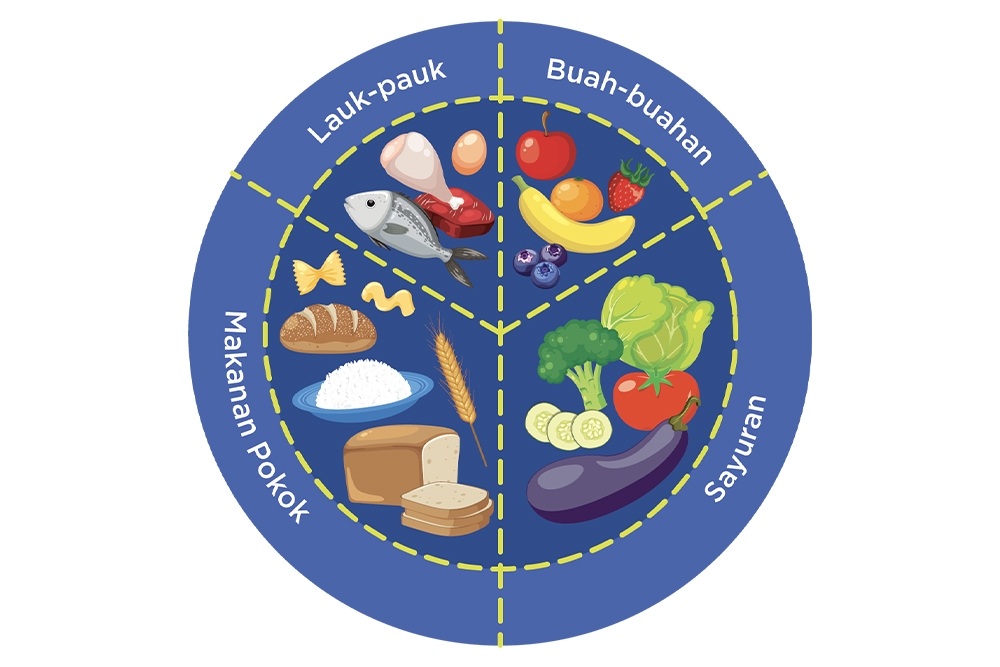Malnutrition Uncovered: Symptoms, Causes, and What to Do

Broken nails, hair loss—recognizing the signs that you are deficient in vitamins and minerals can help you adjust your intake.
While seblak's ingredients appear diverse, excessive consumption can lead to nutritional imbalances. Compared to daily dietary needs, seblak tends to be high in calories and sodium but relatively low in fiber and protein. This imbalance can increase the risk of malnutrition, potentially causing serious health issues.
Before diving deeper, let's first understand what malnutrition is. Many assume it only refers to undernutrition, but malnutrition is a broader term describing a nutritional imbalance in the body—whether from a deficiency or an excess of nutrients.
Although it generally occurs in children, malnutrition can affect individuals of any age. Symptoms include low body weight, reduced appetite, and bloating. Meanwhile, obesity and joint pain are indicators of overnutrition.
Types of malnutrition
1. Undernutrition
This syndrome is caused by a lack of calories, protein, and micronutrients (vitamins and minerals), disrupting the body’s functions. In children, it can inhibit their growth and development.
According to the World Health Organization (WHO), undernutrition includes several aspects:
- Wasting: Low weight for height due to calories and protein deficiency.
- Stunting: Low height for age due to chronic malnutrition. This condition can affect brain and cognitive development.
- Underweight: Low weight for age due to lack of calorie and nutrient intake.
- Micronutrient deficiency: Lack of essential vitamins and minerals, such as iron, iodine, and vitamin A, which can cause anemia to visual impairment.
2. Overnutrition
On the other hand, eating too much food, especially those high in calories, fat, and certain micronutrients, can cause malnutrition. This overnutrition is often associated with obesity, which is a risk factor for chronic diseases, such as heart disease, diabetes, and hypertension.
Foods like fried, sugary, and fast foods are often high in calories but low in nutrition. This increases body fat accumulation, especially when combined with a lack of physical activity.
What causes it?

Several factors can lead to malnutrition:
1. Unbalanced diet
A diet overly focused on high-calorie foods, limited food variety, or insufficient nutrient-rich foods can result in deficiencies in essential vitamins and minerals.
2. Medical conditions and digestive disorders
Conditions like inflammatory bowel disease (IBD), Crohn's disease, and ulcerative colitis may impair nutrient absorption. Issues like pancreatic insufficiency or another absorption issue can cause malabsorption, which means the body cannot properly absorb nutrients.
3. Excessive alcohol consumption
Excessive alcohol can disrupt metabolism, reduce appetite, and interfere with the absorption of vitamins and minerals, worsening deficiencies in calories, protein, and micronutrients.
4. Mental health
Mental health issues, such as depression and eating disorders (anorexia nervosa and bulimia nervosa), may lead to irregular eating patterns and reduced nutrient intake. People with mental health issues may have a poor appetite or may overeat as a coping mechanism, which increases their risk of malnutrition.
What are the symptoms?
Malnutrition can look like:
- Weight loss and a body mass index below 18.5
- Thin arms and legs with edema (fluid swelling) in the abdomen and face due to protein deficiency.
- Stunted growth and delayed intellectual development in children.
- Fatigue, fainting, and feeling cold due to a low body temperature.
- Dry and inelastic skin, rashes, and lesions.
- Brittle hair that falls out easily and loss its pigment.
- Often severe infections.
- Low heart rate and blood pressure.
Meanwhile, excess nutrition may include obesity, high blood pressure, insulin resistance, heart disease, and other diseases that are complications of obesity.
How to prevent it?
The most effective way to prevent malnutrition is to maintain a balanced and nutritious diet.
You should consume a variety of fruits, vegetables, and carbohydrates.
The Indonesian Ministry of Health suggests “Isi Piringku” to prevent malnutrition.

One plate of food contains staple foods, side dishes, and vegetables or fruits. The composition includes a combination of 50% fruits and vegetables, and 50% carbohydrates and proteins with a division of one-third side dishes and two-thirds carbohydrates.
Avoid skipping meals and eat three times a day in small portions and two to three snacks a day if your appetite is poor. Drink after meals, not before or during meals because it can make you full.
Taking supplements and adding micronutrients or fortified foods that are high in calories and protein can also help prevent malnutrition.
Remember to monitor your weight gain and loss regularly. Make a weekly log.
Do regular daily exercise even if it's just light movement for at least 30 minutes 3-5 times a week. Increasing physical activity can stimulate appetite and strengthen bone and muscle mass.
**
Don't let malnutrition interfere with your health or your loved ones!



